College of Health
27 Better together? Examining the consolidation of memories sharing a common structure
Owen Benzley; Geneviève Albouy; Ainsley Temudo; and Bradley R. King
Faculty Mentor: Geneviève Albouy (Health, Kinesiology, and Recreation, University of Utah)
Background
Previous research indicates that declarative and procedural memory processes are not separate but share common networks and processes (Poldrack, 2004). Considering interactions between memory systems offers an interesting avenue to enhance memory consolidation (Mutanen, 2020), the process by which newly acquired memories are transformed into a more robust and long-lasting form (McGaugh, 2000). In this pilot study, we tested whether a common learning structure promoting higher-order associations between memories from different domains, can enhance the consolidation of newly created memories.
To do so, we developed a new serial reaction time task (SRTT) using pictures of objects to create visual cues to trigger motor responses, allowing us to investigate sequence learning in both the procedural and declarative memory domains. Notably, the task was designed such that there were – or not – associations between fingers and object categories. In the associated version of the task, each finger was associated to a specific object category, while there was no such finger-object association in the unassociated version of the task. This pilot study includes two groups of young, healthy adults that were assigned to either the associated (n=3) or unassociated (n=3) groups described above. All participants learned the motor and object sequences 4 hours apart on experimental day 1 and consolidation was assessed with an overnight retest on both tasks.
We hypothesized that participants in the associated group would show greater learning and consolidation (measured through performance speed and accuracy on the task), than participants in the unassociated group.
Methods
All six participants were healthy young adults aged between 18 and 35 years with no formal musical training and were all right-handed. We designed a new serial reaction time task (SRTT) using pictures to create visual cues to trigger motor responses (Figure 1B). This task allowed us to probe both motor and object sequence learning (and to therefore examine procedural and declarative memory processes using the same task). The motor sequence was a pattern of 8 key presses using the fingers of the left hand (excluding the thumb), where each finger was used twice (i.e., 41324312). The object sequence was a pattern of 8 images split into four categories, vehicles, fruits, animals, and tools (Figure 2). To establish an association between memories from the different domains, a specific finger was associated to a specific object category (associated group, Figure 1C). No such association was present in the unassociated group. Participants were invited for three experimental sessions spread over two consecutive days (Figure 1A). They learned the motor and object sequence tasks on day 1 during two sessions separated by 4h (task order counterbalanced across participants). Consolidation was measured with an overnight retest (taking place approximately 24 h after session 2) of both object and motor tasks.

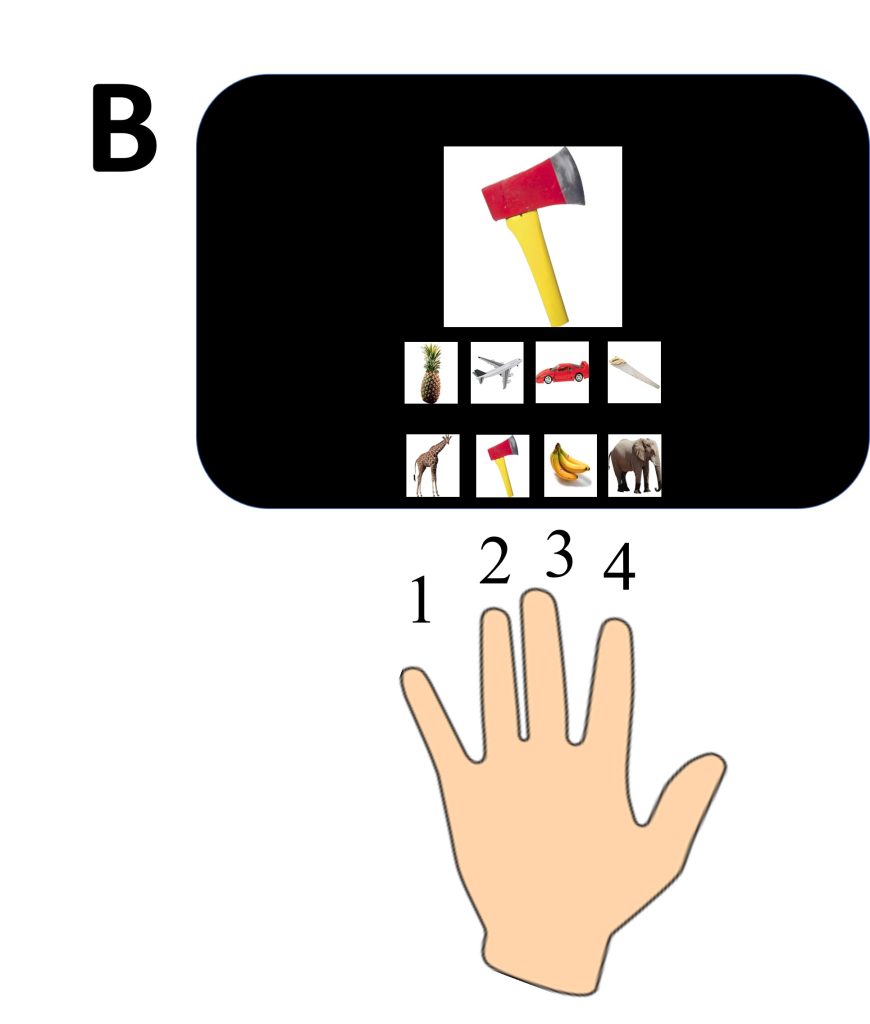
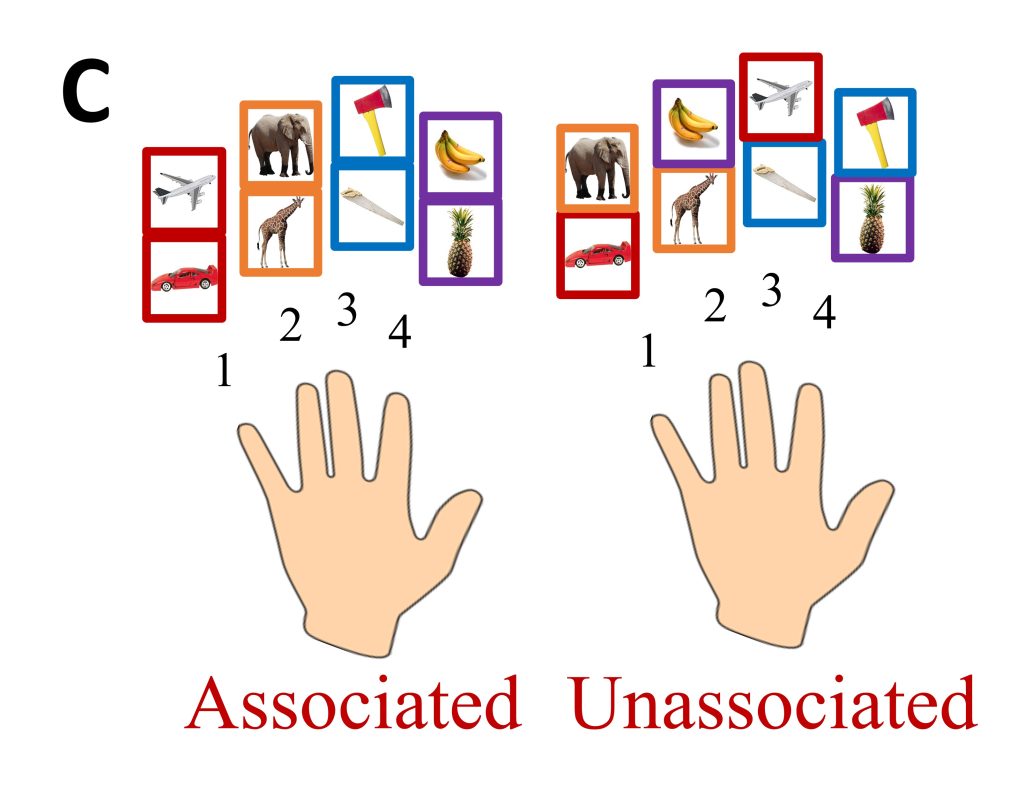 Figure 1: A. Visual representation of the experiment design. Participants learned the object and motor sequence learning tasks on day 1 (sessions 1 and 2) in a counterbalanced order. Consolidation was assessed with an overnight retest (session 3). Bl. = blocks. B. Diagram of the Serial Reaction Time Task (SRTT) with two objects mapped to each finger of the left hand (excluding thumb). C. Mapping of images to fingers in the associated and unassociated groups (left and right panel, respectively).
Figure 1: A. Visual representation of the experiment design. Participants learned the object and motor sequence learning tasks on day 1 (sessions 1 and 2) in a counterbalanced order. Consolidation was assessed with an overnight retest (session 3). Bl. = blocks. B. Diagram of the Serial Reaction Time Task (SRTT) with two objects mapped to each finger of the left hand (excluding thumb). C. Mapping of images to fingers in the associated and unassociated groups (left and right panel, respectively).
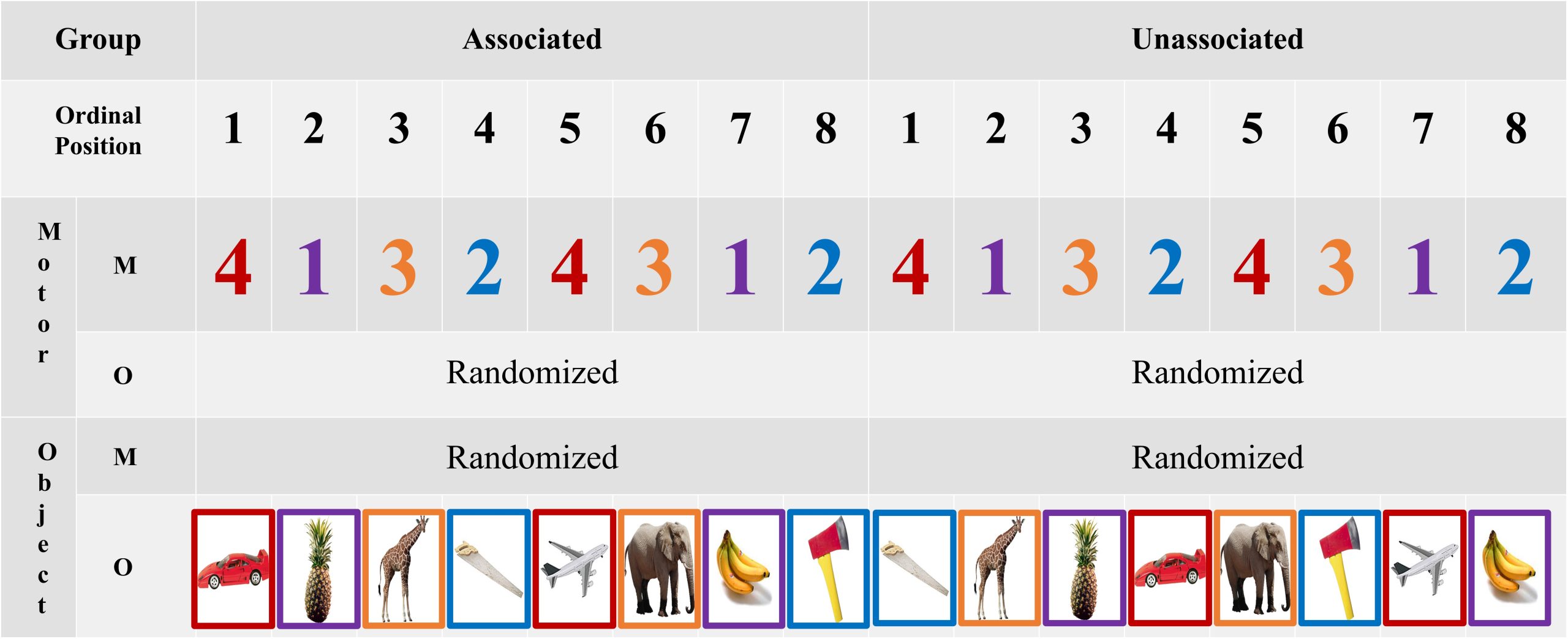
Figure 2: Higher-order associations between the motor and the object sequences. In the associated group, each number (key/finger) occupies the same ordinal position as an object category (e.g., 4 is in the first and fifth ordinal positions, along with the vehicle category objects, car and airplane, in the same positions).
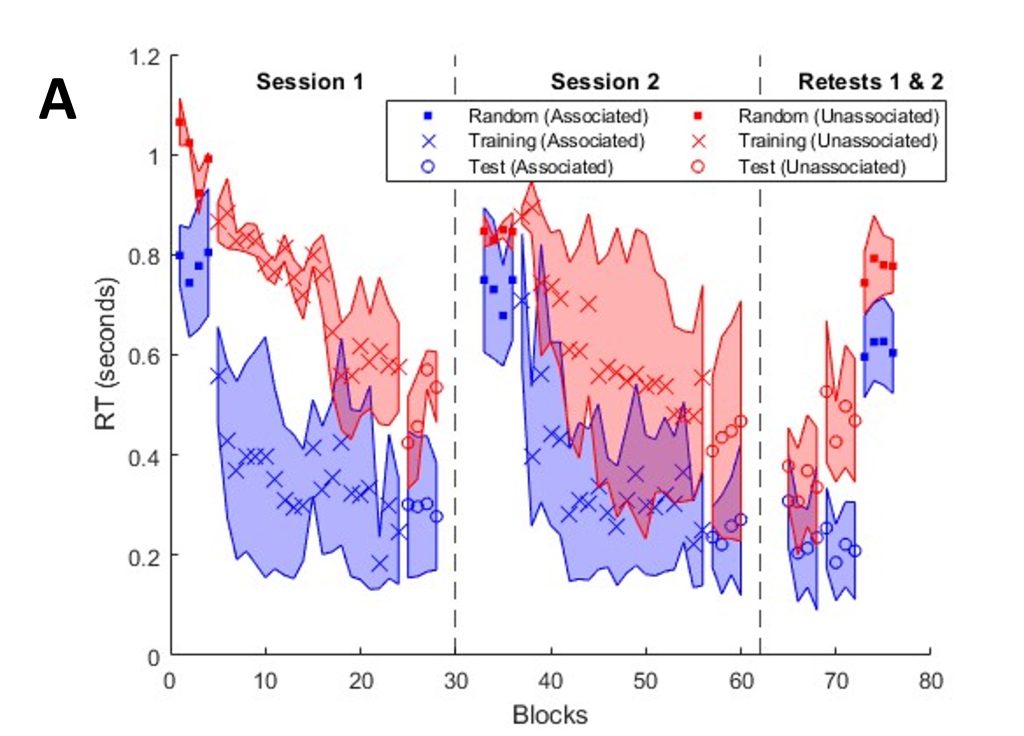
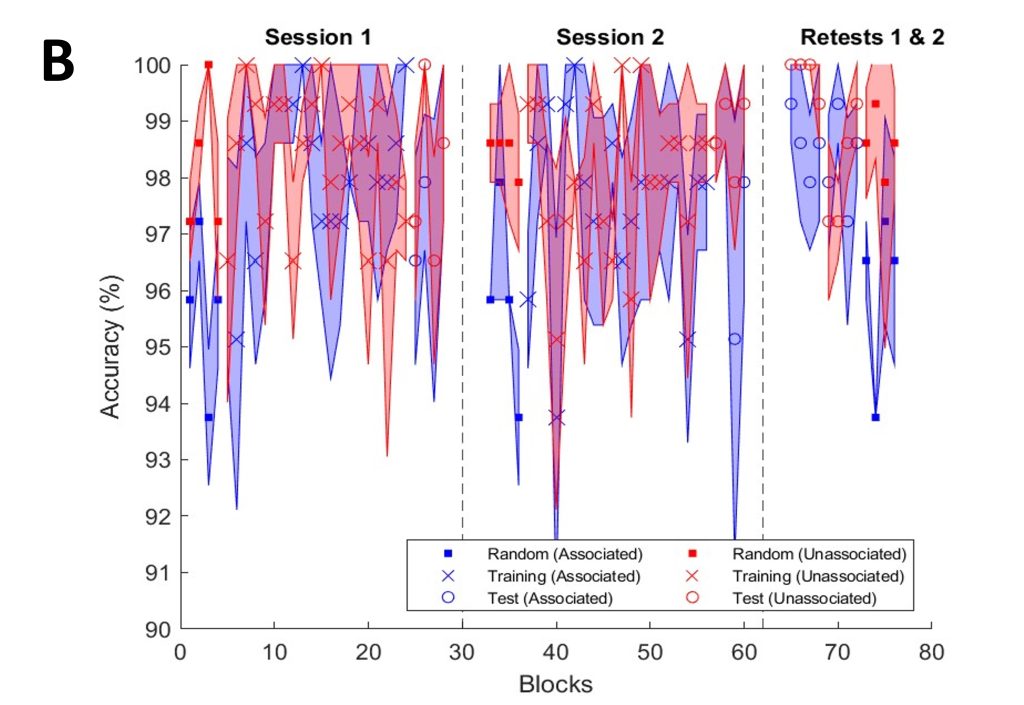
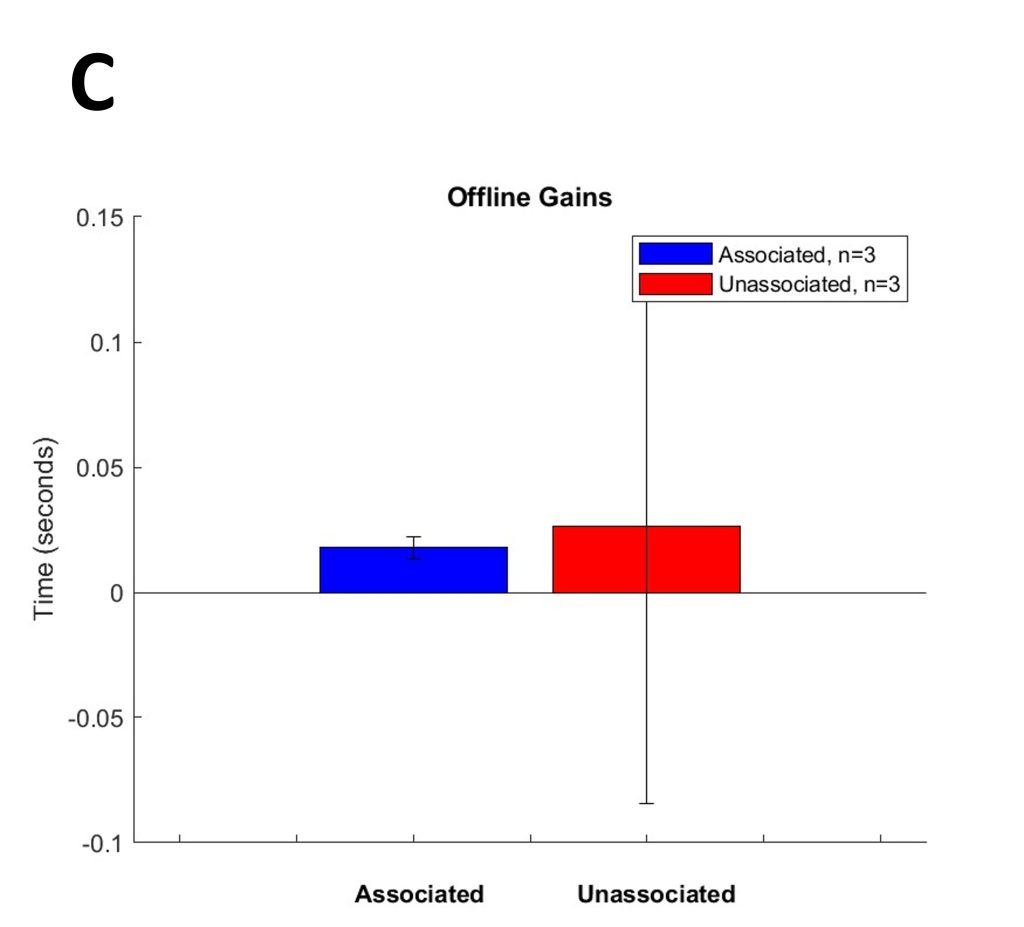
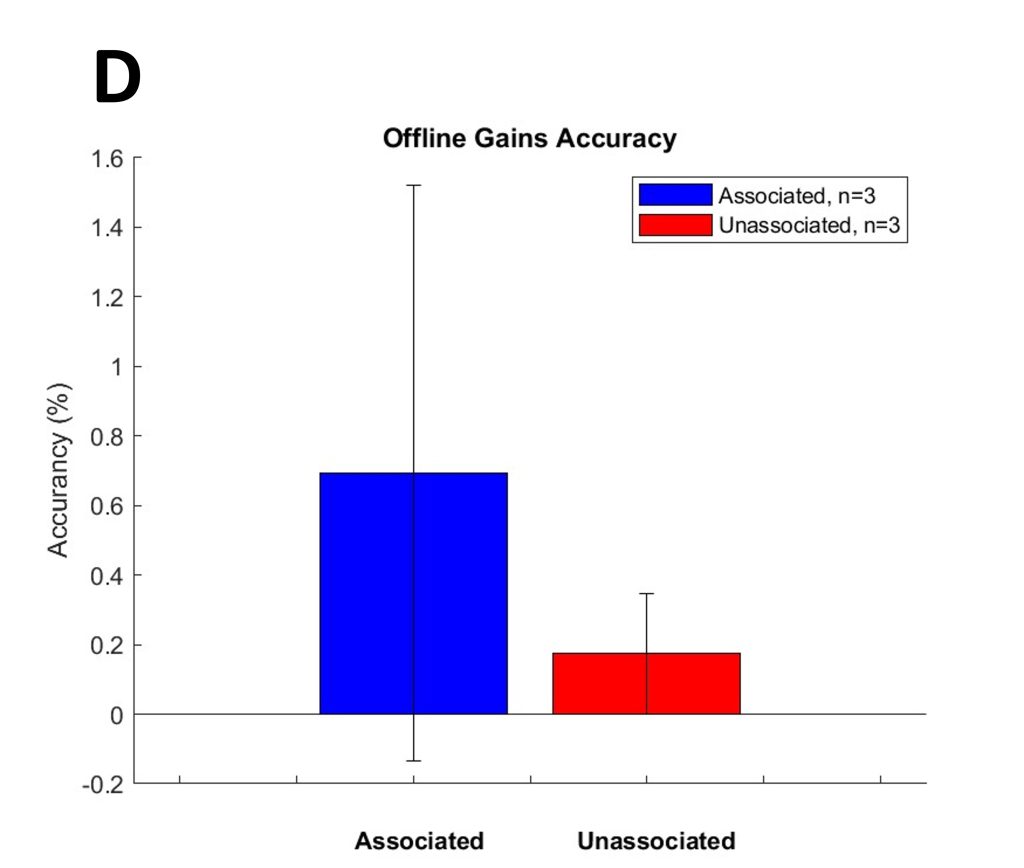
Figure 3: Averaged speed (A) and accuracy (B) data from 6 participants (3 associated, 3 unassociated) in all sessions irrespective of task order. The associated group shows an overall faster reaction time in all sessions compared to the unassociated group. Accuracy was similar between groups. Offline gains in performance speed (C) and accuracy (D) between the test in session 2 and the overnight retest in session 3. Results suggest that consolidation-related gains in speed were similar between groups whereas gains in accuracy were greater in the associated as compared to the unassociated group. In all panels, shaded regions and bars represent SEM.
Conclusion
These pilot data indicate that a higher-order association between memory domains did not improve learning as session 2 performance was not greater than session 1 performance in this preliminary sample. While associations between memory domains did not influence consolidation processes assessed with performance speed, offline gains in performance accuracy were greater in the associated, compared to the unassociated group. These pilot data therefore suggest that memories from different domains sharing a common learning structure show greater consolidation than unassociated memories. The results of this study will provide the foundation for future research that will examine the specific neural mechanisms underlying interactions between memory domains. This study also has the potential to unravel how shared processes across memory domains can be leveraged to enhance memory consolidation, which has important clinical implications.
Acknowledgements
This work was supported by SPUR from the Office of Undergraduate Research at the University of Utah, awarded to Owen Benzley.
Bibliography
McGaugh JL. Memory–a century of consolidation. Science. 2000 Jan 14;287(5451):248-51. doi: 10.1126/science.287.5451.248. PMID: 10634773.
Mutanen, T. P., Bracco, M., Robertson E. M. (2020). A common task structure links together the fate of different types of memories. Current Biology, 30(11), 2139-2145.e5
Poldrack, R. A., & Rodriguez, P. (2004). How do memory systems interact? Evidence from human classification learning. Neurobiology of learning and memory, 82(3), 324-332

